#OSIRIS Rex SRC landing
Explore tagged Tumblr posts
Text
OSIRIS-REx SRC landing in 8 minutes!
29 notes
·
View notes
Text
Earth is constantly bombarded by fragments of rock and ice that have drifted from space, known as meteoroids. Most of these are about the size of a grain of sand or a pebble, and burn up completely high in the atmosphere. Meteoroids larger than a golf ball can be meteor Or a shooting star On a dark and clear night.While very small meteorites are common, meteorites larger than a dishwasher are not uncommon.The meteor is Aerospace and Geophysicist Normally, man-made objects are not suitable for study because it is impossible to predict when and where they will hit the atmosphere. However, on very rare occasions, it is possible to study man-made objects that enter the atmosphere, such as meteorites. These objects are space A mission designed to deliver samples of extraterrestrial material from space EarthDue to its similarity to a meteorite's impact, the Sample Return Capsule (SRC) is often referred to as the "artificial meteorite."Recently, more than 80 researchers from more than a dozen institutions collaborated to study such "artificial meteors." NASA's OSIRIS-REx sample return capsule – It occurred upon re-entering Earth's atmosphere.Related: The first examination of samples from the asteroid Bennu suggests the space rocks could be "fragments of an ancient ocean world."These institutions include Sandia National LaboratoriesNASA Jet Propulsion Laboratory, Los Alamos National Laboratory, Defense Threat Reduction Agency, TDA Research Inc., University of Hawaii, Air Force Research Laboratory, Black Nest Nuclear Weapons Facility, Boise State University, Idaho National Laboratory, Johns Hopkins University, Kochi University of Technology, Nevada National Security Site, Southern Methodist University, University of Memphis and Oklahoma State University.The latest space news, rocket launch updates, astronomy events, and more!This sample return gave our team a unique opportunity to measure sound waves and other phenomena generated by objects from space as they pass through Earth's atmosphere.To capture the signals, numerous highly sensitive microphones and other equipment were placed at strategic locations close to SRC's flight path.While space agencies and private companies launch objects into space, time, Osiris Rex The SRC is one of the few objects to have returned to Earth from interplanetary space since the end of the Apollo program, as these are the only objects capable of achieving the same speeds as natural meteoroids. Their re-entry is valuable. To study the properties of natural objects. Asteroid sample collection National Aeronautics and Space Administration (NASA) Origin, Spectral Interpretation, Resource Identification, Security, Regolith Explorer, or Osiris RexThe mission was completed on September 8, 2016. Near-Earth Asteroid Bennuand samples were taken from its surface in October 2020. Specimen, sample Returned to Earth Launched in a sample return capsule in the early morning of September 24, 2023, the SRC re-entered the atmosphere over the Pacific Ocean at speeds of more than 27,000 miles per hour (43,500 kilometers per hour), landing in Utah just minutes later. A close-up of the OSIRIS-REx sample capsule on the ground in Utah. (Image courtesy of Mark Koenig/University of Arizona)SRC generates shock waves As it penetrates deeper into the atmosphere, a shock wave appears that resembles the sonic boom produced by a supersonic jet plane. Breaking the sound barrierThe shock wave then subsides, leaving only a low frequency sound. It is called infrasound.Humans cannot hear infrasound, but sensitive scientific instruments can detect it from great distances. These instruments can be ground-based or suspended in the air from balloons.Observation of SRC Our team of scientists saw the SRC's re-entry as an opportunity to learn more about meteors. Siddharth Krishnamoorthi NASA Jet Propulsion Laboratoryused the SRC's re-entry to test an infrasound detection balloon that could later be used in space. Venus.Another
team led by one of us – Elizabeth Silver - and Danny Bowman Researchers at Sandia National Laboratories used the SRC to better understand how sound can be harnessed. [gather information about meteoroids].These observation campaigns involved researchers from many institutions across the country.Our team strategically placed instruments over a 300-mile (482 km) stretch from Eureka, Nevada, to near the landing site in Utah. The instruments ranged from high-tech, custom sensors to smartphones on the ground around the SRC's flight path and landing site to monitor infrasound waves during SRC re-entry.In addition to ground-based sensors, the researchers mounted instruments on balloons that floated at twice the altitude of a commercial airliner during the SRC's re-entry. These balloon-mounted sensors recorded sound waves generated by the SRC's shock wave. These sound waves conveyed information about the SRC, its movements, and the environment it passed through.One of the balloons launched early in the morning, equipped with sensors to detect infrasound emitted by the OSIRIS-REx capsule as it re-enters. (Image courtesy of Emmalee Huff)The balloon team had to time it carefully to make sure the balloon was in the right position when the SRC passed by. NASA Jet Propulsion Laboratory, Oklahoma State University and Sandia National Laboratories Several types of balloons were launched before dawn from Eureka, Nevada.OSU, Sandia National Laboratories, University of Hawaii They also placed ground-based infrasound sensors at the Utah-Nevada border, close to the SRC's landing site, and at Wendover Airport, which detected clear infrasound signals even though SRC had already slowed and Wendover Airport was about three times farther down the flight path than the Eureka site.Researchers from these teams are currently analyzing the data to identify the points in orbit where instruments recorded the SRC re-entry signal. Because the SRC's flight path was approximately 300 miles (482 km), researchers need to determine where the signal originated when it was detected by various sensors.This is the most measured Historical hypersonic reentries.This work will help our team understand the pattern in which the low-frequency sound waves propagated through the atmosphere and where the shock waves peaked.Team members from the University of Hawaii and Oklahoma State University during the deployment at Wendover Airport. (Image courtesy of Milton A. Garces)Our team is still analyzing the data, but preliminary results show that our instrument captured many signals that will be useful for future research using infrasound waves to study meteors.By understanding the complex mechanisms behind how low-frequency sound waves travel through the atmosphere, researchers could use infrasound to detect dangers on Earth. Tornadoes, etc. avalanche.
0 notes
Text
OSIRIS-REx Brings Asteroid Samples Home
At 7:42AM Pacific yesterday Sunday morning, OSIRIS-REx entered Earth’s atmosphere at 27,000mph, bringing the largest sample of extraterrestrial material home since Apollo. The robot mission quickly dropped off its collection canister, before zipping back into deep space on another mission. It took 10 minutes for the sample (SRC) to land. The precious cargo it delivers consists of samples of dust…

View On WordPress
0 notes
Link
The OSIRIS-REx spacecraft, launched in September 2016, is now less than a month away from bringing back samples from asteroid Bennu. NASA conducted a press conference on Aug. 30 to preview the Sept. 24 landing at the Dugway Proving Ground in Utah. To prepare for the landing, NASA conducted an end-to-end capsule retrieval exercise on Tuesday, Aug. 29 at Dugway. The test capsule was set down onto the playa where the OSIRIS-REx capsule is expected to land, and teams retrieved the test capsule using the same methods, tools, and procedures they will use on landing day. On Wednesday, Aug. 30, a drop test was conducted from 2.13 kilometers in altitude above ground level. The test capsule was dropped from a helicopter and successfully deployed its main parachute. Rani Gran from NASA stated that the test went well with only minor dragging of the chute and capsule by wind. This was the final rehearsal before the landing. A closeup of the replica OSIRIS-REx sample capsule that was drop tested earlier on Aug. 30. (Credit: Justin Davenport for NSF/L2) There are several maneuvers that the spacecraft needs to complete before a decision is made for whether the sample return capsule (SRC) is go for release and landing. This decision is scheduled for 2:00 AM MDT (0800 UTC) on Sept. 24, and currently, it is expected that the decision will be to proceed with the release. After the decision is made to release the capsule, the release command will be sent to OSIRIS-REx from the Lockheed Martin Mission Support Area in Littleton, Colorado, a suburb of Denver. After this command is sent, the actual release will occur around three hours later. There is an additional hour available in that window if needed. The decision to release the SRC hinges on three criteria: safety to humans, capsule survivability, and landing accuracy. If there is an issue with the capsule’s landing trajectory, the separation of the capsule itself, or the spacecraft that would prevent the landing, there is a contingency plan. Animation showing OSIRIS-REx just before sample return capsule release. (Credit: NASA) If an issue were to prevent capsule release and landing, OSIRIS-REx would fly by Earth and troubleshoot the issue over the next two years. Another opportunity to release the capsule and land at Dugway will present itself in 2025. Should this happen, however, OSIRIS-REx would fly past the Sun, exposing the spacecraft to temperatures higher than the spacecraft was designed to withstand. Teams are very confident that everything will be in order for a landing on Sept. 24, and Lockheed Martin’s OSIRIS-REx program manager Sandy Freund noted that OSIRIS-REx has had an extensive test program. The OSIRIS-REx SRC itself is of the same design that was used for the successful recovery of the Stardust comet samples, and the design’s success on that mission was the reason it was chosen for this flight. A tracking camera similar to one that will be used during the OSIRIS-REx sample capsule return. (Credit: Justin Davenport for NSF/L2) It is also notable that weather conditions at Dugway will not cause any postponement to the landing, even if conditions are less than ideal. For example, during the drop test, visibility was lowered due to smoke from fires in the Pacific Northwest that moved into Utah. Despite the smoke, the drop could still be tracked by the sensors that will be used for the actual landing. Infrared sensors are part of the sensor suite that will track the spacecraft on landing day and can detect the capsule in darkness and through smoke. Radar and optical sensors will also help track the descending capsule. Even precipitation or thunderstorms would not delay the landing, though they could affect when the capsule would be recovered. Once the SRC is successfully released from the OSIRIS-REx spacecraft, it will take four hours for the capsule to reach Earth’s surface. The release can occur up to one hour later if needed. The SRC release is currently scheduled to occur at 4:42 AM MDT (10:42 UTC) when OSIRIS-REx is approximately 107,800 kilometers from Earth, per NASA Goddard’s OSIRIS-REx project manager Rich Burns. Interestingly, other documentation states the release distance as 102,000 kilometers. An infographic with the timeline for entry and landing of the sample capsule for OSIRIS-REx. (Credit: University of Arizona/Heather Roper) The SRC, massing approximately 46 kilograms, is equipped with an accelerometer that will measure G-forces on the spacecraft, but is not equipped with any GPS electronics or cameras. The capsule will have its ablative PICA heat shield facing the Earth as it cruises toward our home planet with its asteroid samples. The OSIRIS-REx spacecraft will maneuver off to one side to miss Earth, with the maneuver scheduled for 5:02 AM MDT (11:02 UTC). OSIRIS-REx will fly by our home planet at an altitude of approximately 780 kilometers before embarking on the OSIRIS-APEX mission to the near-Earth asteroid Apophis. OSIRIS-APEX will fly by Apophis in 2029, shortly after the potentially hazardous asteroid makes a close flyby of Earth. After a few hours of traversing the distance from the release point to the Earth’s atmosphere, the OSIRIS-REx sample capsule will enter the atmosphere at 8:42 AM MDT (14:42 UTC). Capsule entry will be at an altitude of around 132 kilometers, at a speed of 44,498 kilometers per hour. The SRC will endure forces of up to 32 times Earth’s gravity (32 G) during its descent, which will take approximately 13 minutes from atmospheric entry to touchdown. One minute after entry, the capsule reaches peak heating of 2,760 degrees Celsius. The landing ellipse for the OSIRIS-REx return capsule within the Dugway Proving Ground. (Credit: NASA/USGS/Landsat 8) Two minutes after reentry, the drogue chute will deploy at an altitude of approximately 31 kilometers above the surface. The spacecraft will enter the restricted airspace above the Dugway Proving Ground, which is approximately 3,642 square kilometers in size, or roughly the area of the US state of Rhode Island. As the proving ground and its airspace is over 138 kilometers southwest of Salt Lake City, and the most remote US Army base in the continental United States, it is an ideal location for the landing sequence. This remote location was one of the reasons for the proving ground’s founding in 1942, as the US Army needed a remote place to test chemical and biological weapons. Within the Dugway Proving Ground, the landing ellipse that OSIRIS-REx’s sample capsule will use is an approximately 58-kilometer by 14-kilometer strip of land centered on a playa, or dry lakebed, which is a remnant of the ancient Lake Bonneville, which was once almost as large as Lake Michigan. The playa at Dugway Proving Ground, Utah where the OSIRIS-REx sample capsule is expected to land on Sept. 24, 2023. (Credit: Justin Davenport for NSF/L2) While the capsule is underneath its drogue chute, OSIRIS-REx will make its closest approach to Earth before heading for Apophis. OSIRIS-REx’s closest approach is expected to occur at 8:45 AM MDT (14:45 UTC). Five minutes after OSIRIS-REx’s closest approach to Earth, at 8:50 AM MDT (14:50 UTC), the sample capsule will deploy its main parachute at an altitude of 1,539 meters above the surface. Five minutes after that, at 8:55 AM MDT (14:55 UTC) the capsule will touch down at a speed of 11 miles per hour. A Bell JetRanger taking off from Michael Army Airfield at Dugway Proving Ground on Aug. 30, 2023. This is one of the helicopters that will be involved in the Sept. 24 OSIRIS-REx landing. (Credit: Justin Davenport for NSF/L2) Once the capsule touches down, the retrieval and curation process will begin. Four helicopters, staging out of Michael Army Airfield, will be involved in retrieval operations, with two of them directly working on the retrieval. When the capsule is located, team members will take samples of the ground the capsule landed on. This step is critical to catalog any contamination that could find its way into the asteroid samples. If anything unusual is noted during tests on the asteroid samples, teams could check the asteroid samples for contaminates from the landing location. Personnel will also check for any unexploded ordnance near the spacecraft after landing since Dugway is a military test range. Team members will secure the capsule to a cargo net, which will be slung under one of the helicopters. The helicopter will take the capsule away to be loaded onto a fitting outside the small hangar near the Michael Army Airfield on the grounds of the Dugway installation. The fitting that will take the OSIRIS-REx sample container directly into the portable clean room. (Credit: Justin Davenport for NSF/L2) The capsule’s asteroid sample container will be offloaded and transferred to a separate fitting which will be rolled into a portable clean room specifically built for handling the OSIRIS-REx samples. The samples will be connected to a supply of nitrogen that will protect them from Earth’s atmosphere. Furthermore, the clean room, which is kept at a temperature of 20 degrees Celsius, has an air pressure slightly above the air surrounding it to keep dust and dirt out. The portable clean room built specifically for the OSIRIS-REx project. (Credit: Justin Davenport for NSF/L2) On the day after the landing, the samples, inside a specially designed container, will be rolled into a US Air Force C-17 cargo transport, which will take off from Michael Army Airfield bound for Houston, Texas. The Michael Army Airfield runway is built to accommodate large cargo aircraft like the C-17 and was designated as an emergency landing site for the Space Shuttle. Once the C-17 arrives in Houston, the samples will be taken to another clean room that has also been specifically built to handle these samples from Bennu. This was done to prevent any cross-contamination from existing lunar or asteroid samples. Johnson Space Center (JSC) stores Apollo-era lunar samples along with meteorites from Antarctica and samples from the Genesis and Stardust missions. A practice run for analysis of the Bennu samples at the clean room built at JSC for the mission. (Credit: NASA) The Genesis mission to return samples of the solar wind had a parachute deployment failure and suffered a very hard landing when it returned to Earth in September 2004. Although the capsule broke into many fragments, some samples of the solar wind were successfully retrieved and analyzed. Lessons learned were applied to Stardust and future sample return missions, and Stardust was a complete success. There are contingency plans in place if something similar to Genesis were to happen to the OSIRIS-REx capsule, and the team believes that they can get useful samples even in the worst-case scenario of a Genesis-like crash. Tim Priser, Lockheed Martin’s chief engineer for OSIRIS-REx, talked about lessons learned from Genesis, saying “Pay attention to the details and test like you fly, fly it like you test it. The polarity of the G-switches was successfully and extensively tested for polarity on OSIRIS-REx.” Bennu, composed of 12 PolyCam images collected on Dec. 2, 2018 by OSIRIS-REx. Bennu, like Apophis, is a potentially hazardous asteroid. (Credit: NASA/Goddard/University of Arizona) Bennu is a carbonaceous “rubble pile” asteroid, and the chain of custody for these samples is especially important. Earth is teeming with carbon-based life forms, including humanity, and scientists like OSIRIS-REx Principal Investigator Dr. Dante Lauretta of the University of Arizona want to know why this is so. It is thought that asteroids like Bennu could have delivered key elements to Earth that now make-up all life forms. A known “chain of custody” differentiates samples taken directly by spacecraft from meteorites that land on Earth after being blown off the surface of another world. Meteorites are affected by interaction with Earth’s atmosphere, whereas the samples of Bennu that are in OSIRIS-REx are pristine and unbothered. OSIRIS-REx is NASA’s first-ever asteroid sample return, but this is not the first time samples have been returned directly from an asteroid. The Japanese Hayabusa and Hayabusa2 missions have successfully returned samples from asteroids Itokawa and Ryugu, respectively. Ryugu, as imaged by Hayabusa2. (Credit: ISAS/JAXA) JAXA and NASA have worked together closely on their respective asteroid sample missions. The OSIRIS-REx team has received a sample from Ryugu, which is also a carbonaceous asteroid. While the OSIRIS-REx team will receive 25 percent of the OSIRIS-REx mission’s samples, Half of one percent of the samples will be sent to JAXA as part of a sample and scientist exchange. In addition, the Canadian Space Agency will get four percent of the samples, and a portion of the Johnson Space Center curated samples will be sent to White Sands, New Mexico, as a backup collection. A similar process has been done with the lunar samples from the Apollo missions. The rest of the samples will be made publicly available to scientists around the world for analysis, and a large portion will be curated to ensure availability for future generations of scientists. As Kevin Righter, NASA’s deputy curation lead at JSC stated regarding what they have learned from JAXA’s Hayabusa2 mission to Ryugu, “I think getting a sense for what this carbonaceous asteroid material is like, handling it, knowing what to expect, and what kinds of physical effects from the Bennu sample, which is similar in material.” The OSIRIS-REx spacecraft “tagging” Bennu’s “rubble pile” surface in October 2020. (Credit: NASA) It is expected that there will be an update on Oct. 11 regarding the early results from the OSIRIS-REx sample return, and Dr. Lauretta expects to start writing the first paper on the samples by the end of the year. The American Geophysical Union, which is meeting in San Francisco this December, is also expected to feature results from the Bennu samples. What’s more, the Mars Sample Return team is also working with the OSIRIS-REx teams on applying best practices and lessons for the return of its samples from Mars, which is currently scheduled for 2031. In fact, the MSR capsule must be able to survive a hard landing, and a “lawn dart” approach for returning the samples without a parachute is under consideration. This is being considered to eliminate the complexity of having a parachute system on board the spacecraft. An infographic showing NASA’s current and future solar system missions. (Credit: NASA) As NASA and other space agencies continue to launch missions and explore the solar system, sample return is becoming increasingly important and possible with newer technology, especially for the Moon, asteroids, comets, and planetary moons. OSIRIS-REx would bring back the greatest quantity of samples of any mission beyond the Moon to date. Some of the samples could date from a time before Earth was even formed. OSIRIS-REx’s sample return is the first of three events this year that NASA Headquarter’s program executive Melissa Morris called “Asteroid Autumn.” The launch of NASA’s Psyche spacecraft to a metal-rich asteroid is scheduled for October and NASA’s Lucy spacecraft is set to fly by asteroid “Dinkinesh” in the inner main asteroid belt in November. (Lead image: The OSIRIS-REx training replica return capsule under its parachute during the final pre-landing rehearsal on Aug. 30, 2023. Credit: NASA/Keegan Barber) The post OSIRIS-REx teams conduct final rehearsals before sample capsule return in September appeared first on NASASpaceFlight.com.
0 notes
Link
Abstract: Final Paper and not the abstract is attached. The OSIRIS-REx asteroid sample return mission launched to asteroid Bennu September 8, 2016. The spacecraft will arrive at Bennu in late 2019, orbit and map the asteroid, and perform a touch and go (TAG) sampling maneuver in July 2020. After confirma-tion of successful sample stowage, the spacecraft will return to Earth, and the sample return capsule (SRC) will land in Utah in September 2023. Samples will be recovered from Utah and then transported... from New NASA STI https://go.nasa.gov/2rI217J
0 notes
Text
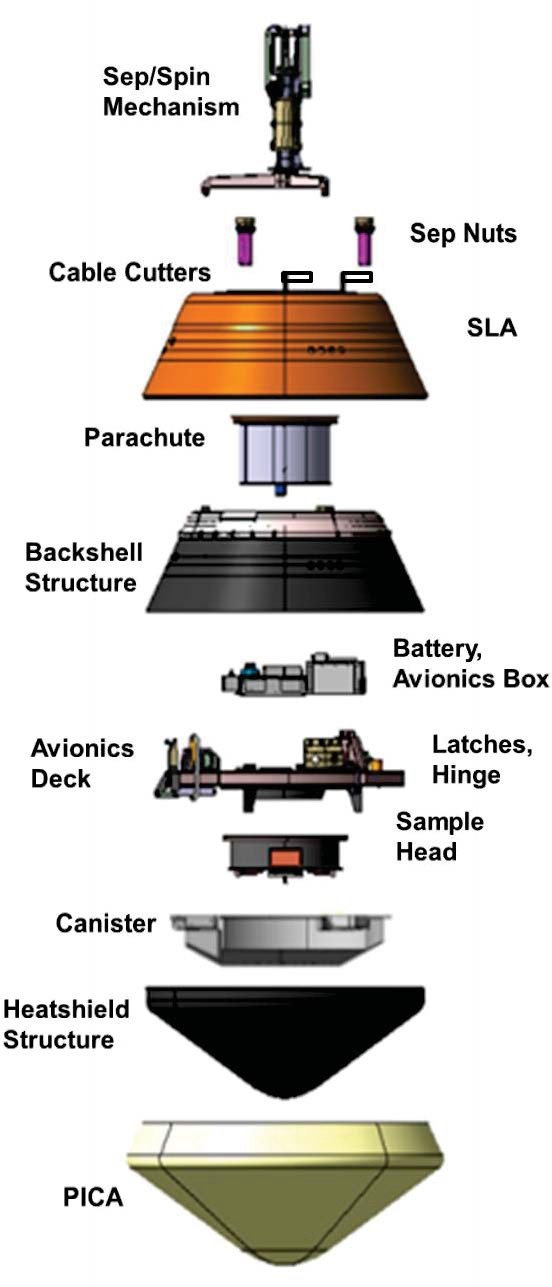
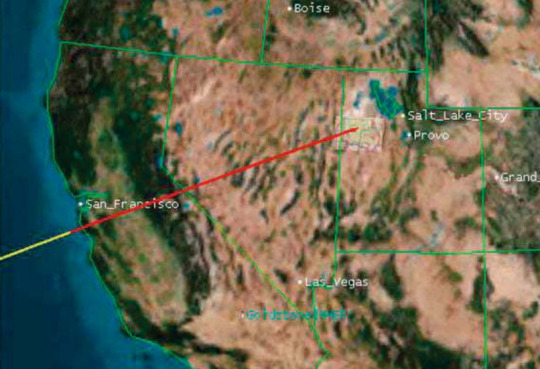
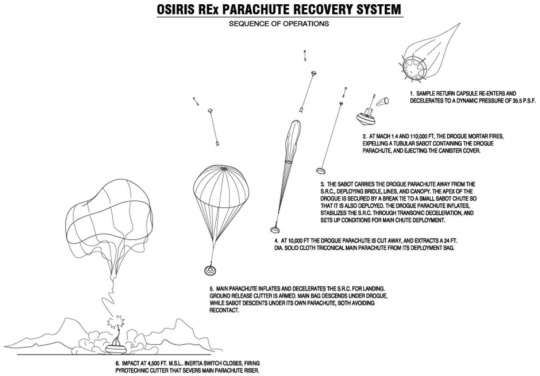
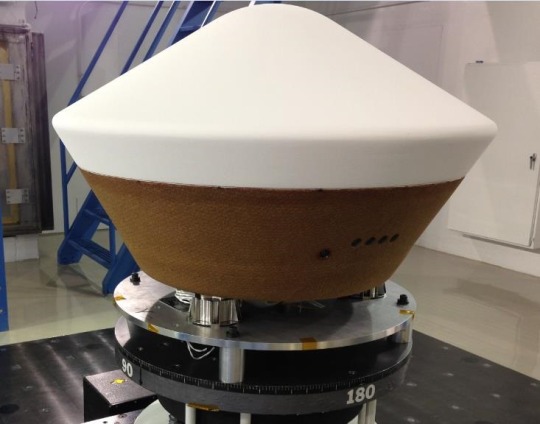
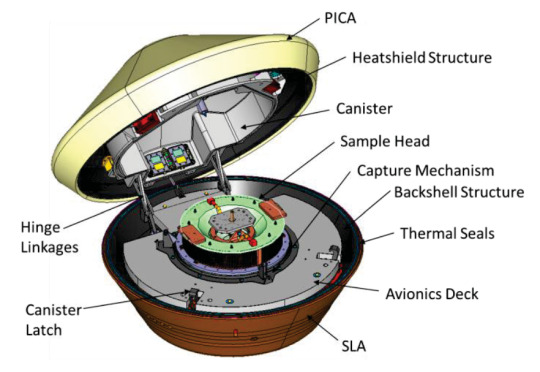
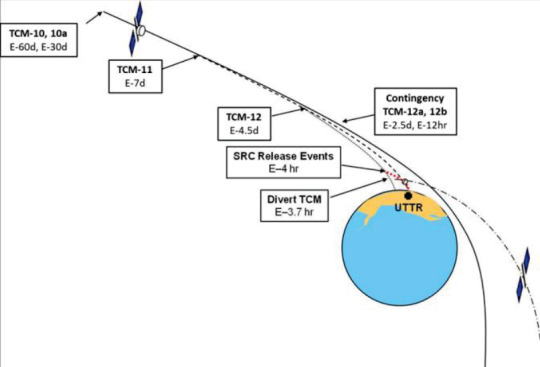

The Sample Return Capsule (SRC) will land today in the Utah Test and Training Range, south west of Utah City.
The OSIRIS Rex (Origins, Spectral Interpretation, Resource Identification, Security, Regolith Explorer) will release the SRC capsule at 11:42 BST (the spacecraft itself will then fire its engine to avoid Earth at 12:02 BST to fly-by at a distance of 485mi so it can continue on another mission). The SRC capsule will enter the Earths atmosphere at 15:42 BST at 12km/sec (feature than an Apollo/Orion reentry from the Moon) and will experience a deceleration of some 32g.
11:42BST (04:42MDT) E-04:00:00 SRC release
12:02 (05:02) E-03:07:00 OSIRIS Rex divert TCM burn (flyby 485mi)
15:00 (08:00) LANDING COVERAGE NASA TV
15:42 (08:42) 14:38:28UT E-0 Entry Interface
E+00:00:51 Maximum heating
E+00:00:61 Maximum G (31.8G)
* At 110,000ft and mach 1.4 drogue chute mortor fires. ejecting the canister cover and expelling a tubular sabot containing the drogue chute.
* Sabot chute deploys pulling out bridle, lines and canopy of drogue chute
E+00:02:25 Drogue Chute Deploy
* Drogue chute inflates, sabot and its chute detach via break tie
* 10,000ft drogue chute detach pulling out 24ft diameter main parachute from its deployment bag
E+00:07:06 Main Chute Deploy
* Main chute inflatesE+00:13:05 Touchdown
Pyrotechnic cutter severs main parachute riser
The recovery team will arrive in four helicopters, first a Lockheed Martin safety engineer will approach the capsule and measure the capsules temperature remotely to ascertain if it is safe to approach, next the atmosphere will be sampled and the area around the capsule will be inspected for any potential hazards.
Them a team from the University of Arizona lead by Principle Investigator Dante Lauretta will cordoned off the area around the Sample Return Capsule (SRC) with flags to denote a keep-out zone and then conduct environmental sampling in that area to build up a library of anything, air, soil, organic matter etc, which could possibly have contaminate the asteroid samples during the landing and recovery.
Once the capsule, weighing 45kg (100 lb), is ready for transport it will be lifted by two people into a metal transport crate and wrapped in multiple layers of Teflon and a tarpaulin. Next the wrapped crate will be fitted with a cargo harness and secured to a lift cable.
This will be attached to a hired Bell Jet Ranger helicopter (in rehearsal's anyway), as a slung load and flown to a hanger at Hill Air Force Base (the range HQ) equipped with a clean room (tent like structure in this case).
There the capsule will be opened and the sample canister will be extracted. The day after both the sample canister and the capsule will be flown to NASA’s Johnson Spaceflight Centre in Houston for storage and from there the sample will be divided and distributed to science investigator teams around the world.
Coverage on NASA TV from 3pm BST (10:00am EDT)... (the picture of the capsule under a parachute is from the recovery rehearsal conducted on 23 August 2023 which was dropped from a helicopter fro the rehearsal)
2 notes
·
View notes
Text
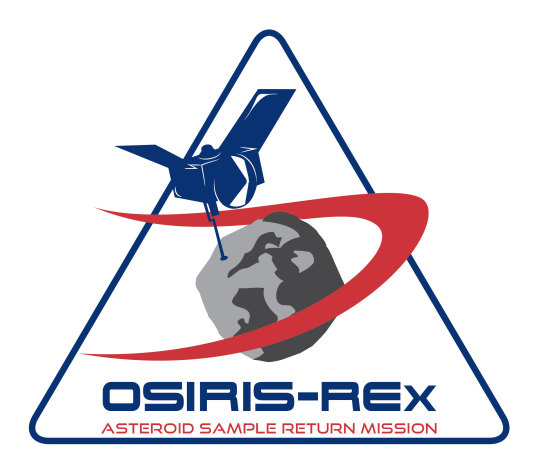
Update 12:19BST
The OSIRIS REx spacecraft has released the SRC capsule (scheduled at 11:42 BST). The capsule will enter the atmosphere, at 15:42 BST over California and land about 13 minutes later in the Utah Test and Training Range (UTTR), south west of Utah City.
Coverage on NASA TV from 15:00 BST (14:00UT)
0 notes

